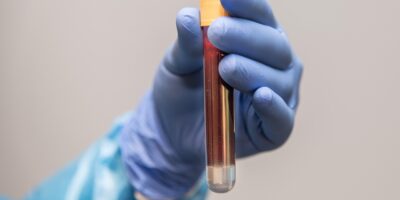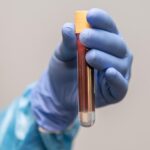What is rheumatoid arthritis and what are its possible treatments?
Rheumatoid arthritis (RA) is a chronic autoimmune disorder that occurs when the body’s immune system attacks their own synovium, the lining of joints. In the synovium, there is an abundance of cells called fibroblasts, resulting in inflammation, pain, and possible damage in the joints. The synovial lining can also grow into a mass, resulting in an increased interaction between synovial fibroblasts and immune cells, resulting in more inflammation and pain.
How do we currently treat RA? The possible treatments for RA include anti-inflammatory immunosuppresants, steroids, and pain reliever, among others. The challenge with these current treatments and therapies is that many patients do not respond well because of their resulting compromised immune system.
The synovial fibroblasts do not have specific cell markers, so how do we target them? Previous studies found that the presence of fibroblast activation protein (FAP) and fibroblasts are positively correlated with arthritis. This positive correlation lead the researchers in this study to take advantage of that. Building on the recent successes of mRNA vaccines against COVID-19, the researchers made mRNA vaccines for RA, hypothesizing that an mRNA vaccine against FAP would improve the symptoms of arthritis.
What did they do to make the mRNA vaccine and subsequently evaluate it?
Firstly, the researchers made consensus cDNA sequences of the FAP gene that were found to be similar in mice, rats, and humans. Consensus DNA sequences are DNA sequences that are taken from different sources but code for the same or similar gene. By using consensus DNA sequences, the researchers increased the vaccine’s immunogenicity (the ability to induce an immune response).
Once the researchers generated the consensus cDNA sequence of FAP, they introduced a mutation that would inactivate the cFAP protein. The researchers then generated mRNA from the mutated cDNA sequence, resulting in mRNA that when translated, would express the inactivated protein cFAP. For the subsequent delivery of the mRNA, the researchers also made lipid nanoparticles (LNPs). By packing the mRNA into these LNPs, the researchers could deliver the vaccine to cells to observe that the cFAP protein in vitro and in vivo.
After the researchers generated the consensus cDNA sequence of FAP, they introduced a mutation, causing it to inactivate the serine protease activity of the cFAP protein. Following the generation of the cFAP protein, the researchers tested the immunogenicity of cFAP in vivo, in mice. cFAP was tested in vivo with two methods. First, by injection subcutaneously (under the skin), and second, by MCMV-cFAP (mouse cytomegalovirus cFAP) infection. Both methods were followed by the induction of arthritis by collagen-induced arthritis (CIA) which involves the induction of inflammatory response of the joint collagen. Both methods resulted in decreased CIA of 20% and 40%, successfully showing immunogenicity of cFAP in vivo. After showing immunogenicity of cFAP, the researchers tested the immunogenicity of cFAP mRNA-LNPs.
Before testing in mice, the expression of cFAP protein through cFAP mRNA-LNPs was tested in vitro, with HEK293 cells, a human cell line. After incubation for 24 and 48 hours with cFAP mRNA-LPNs, the HEK293 cells were lysed and the liquid in and surrounding them were tested for the expression of cFAP, with the help of ELISA and Western blotting.
Once the expression of cFAP in HEK293 cells was confirmed, the researchers moved onto in vivo testing in mice. After vaccination with cFAP mRNA-LNPs, the mice were found to have generated antibodies against cFAP and mouse FAP (mFAP) with the help of ELISA and Western blotting again.
After expression of antibodies was confirmed in mice, the researchers tested whether or not the cFAP mRNA-LNP could suppress arthritis. The researchers vaccinated mice with cFAP mRNA-LNPs, then used two different methods to induce arthritis: CIA and CAIA (collagen antibody induced arthritis). CAIA involves the injection of antibodies that target the collagen of joints. 60% developed a less severe case in the CIA sample group while the vaccine was only able to decrease the severity of symptoms in the CAIA sample group.
How did this research advance the field?
Vaccines using LNPs and mRNA have been proven successful against the most recent pandemic with COVID-19. This research has taken it further, using the same mechanism to treat a chronic disorder, showing that the limitations of mRNA vaccines do not stop at protection against disease. Not only does this research advance the field in a broader perspective, it also advances the arthritis field specifically. The possibility that a vaccine could aid in relieving the symptoms of rheumatoid arthritis contributes hope for RA patients and innovation for researchers.
Source: https://www.degruyter.com/document/doi/10.2478/rir-2023-0013/html








